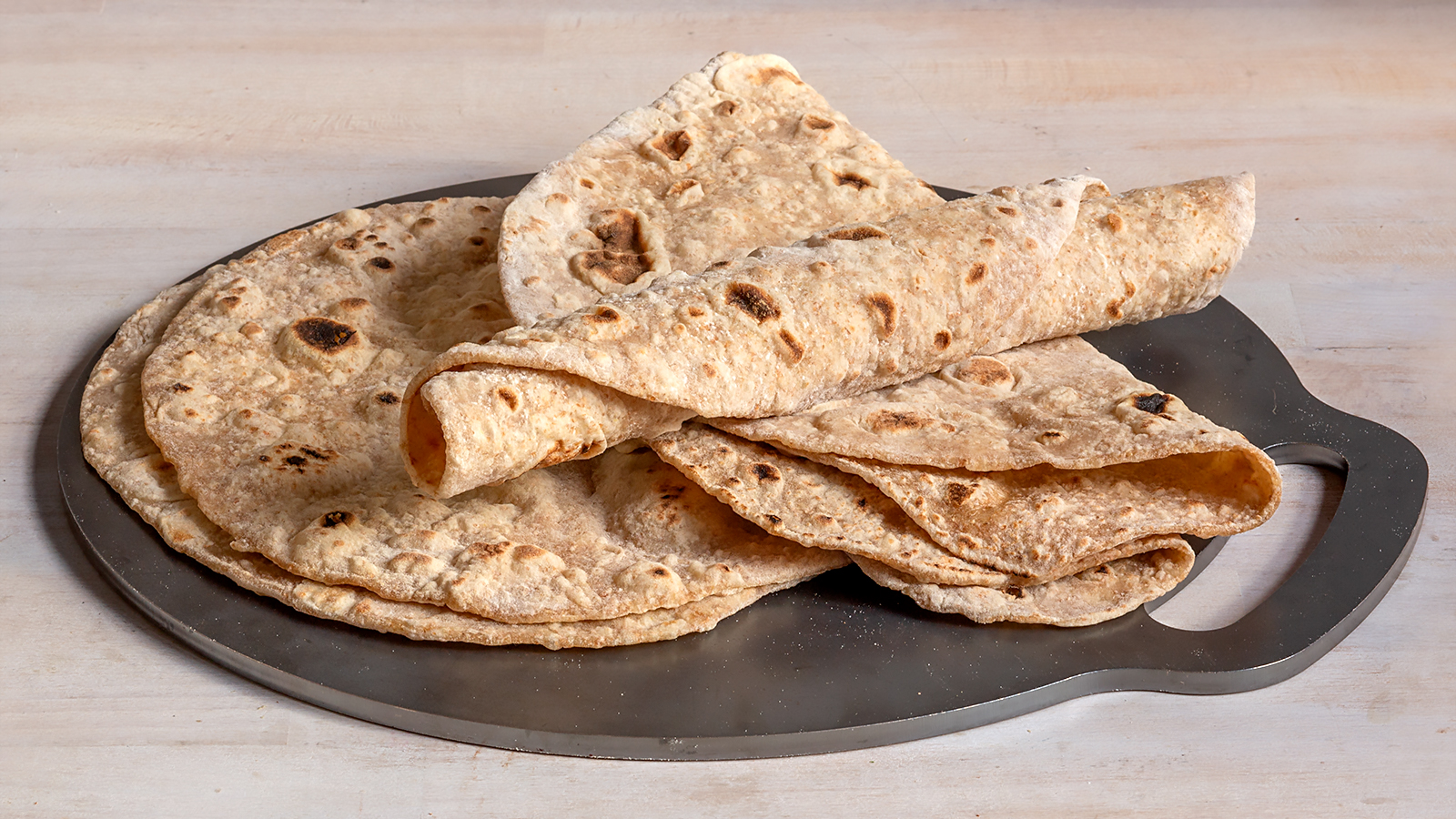Ingredients
200g Matthews Organic Wholemeal Flour
100g Matthews Organic Strong White Flour
5g fine salt
75g boiling water
100g cool water, room temperature is fine.
 Simple flatbreads can easily be made at home using BakeryBits’ traditional Welsh Bakestone: a handy steel plate, often called a griddle, that sits on a stovetop. Perfect for cooking all kinds of flatbreads as you can get a spatula underneath the edge of the bread easily without the nuisance of a frying-pan’s rim.
Simple flatbreads can easily be made at home using BakeryBits’ traditional Welsh Bakestone: a handy steel plate, often called a griddle, that sits on a stovetop. Perfect for cooking all kinds of flatbreads as you can get a spatula underneath the edge of the bread easily without the nuisance of a frying-pan’s rim.
This easy yeast-free recipe uses two-thirds wholemeal flour and one-third white flour, giving you a great wheaten flavour that rolls and folds easily once baked and cold. One unusual but very helpful trick to this recipe is that you mix in a small quantity of boiling water first: this cooks some of the flour and gives you a very tender crumb that stays softer longer than if it was made with all-cold water.
Method
Put the flours and salt together in a mixing bowl, and toss together well. Measure then boiling water into a cup or jug, and with a table fork at hand, add small amounts of boiling water to the flour while tossing it through the bowl with the fork. Then add the cool water and mix everything together to a soft dough. Cover the bowl and leave for an hour, giving it one quick knead during that time.
To make, divide the dough into pieces: five x 100g (for very large) or ten x 50g (for small ones). Shape each over these into neat balls then cover and leave for 20-30 minutes for the dough to relax and roll out easily.
Have your Welsh Bakestone over a medium heat, no fat or oil is needed. Using extra flour as needed roll the dough out as thin as it will go without tearing. Check every so often that it hasn’t stuck underneath: I flip mine over often, flouring the top before I do, then I know they’re unliked to stick. If you want them extra thin, see the tip below.
Carefully lift the flatbread off the worktop, place it on the hot frying pan or bakestone and flip it with a spatula when the underside has browned slightly in patches. Leave to cool on a plate, covered with a dry tea towel, while you cook the remaining dough.
Tip
If you want them extra thin, roll out 2-3, placing each one on a floured tray while you roll the next one. Then return to the first one and you’ll find you can roll it even thinner. Lift it very carefully onto the bakestone to avoid tearing the dough.















